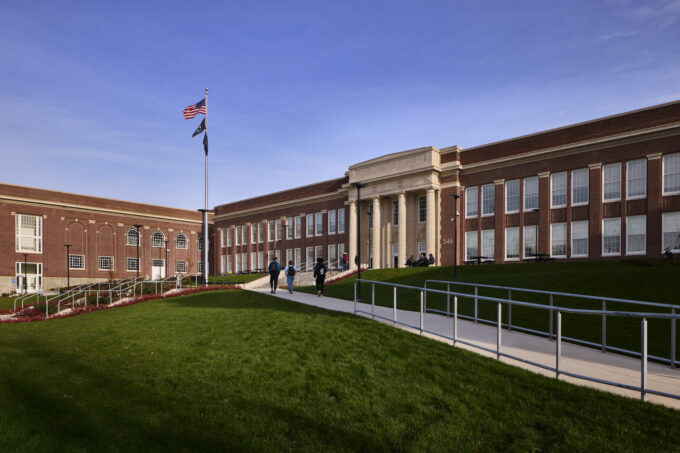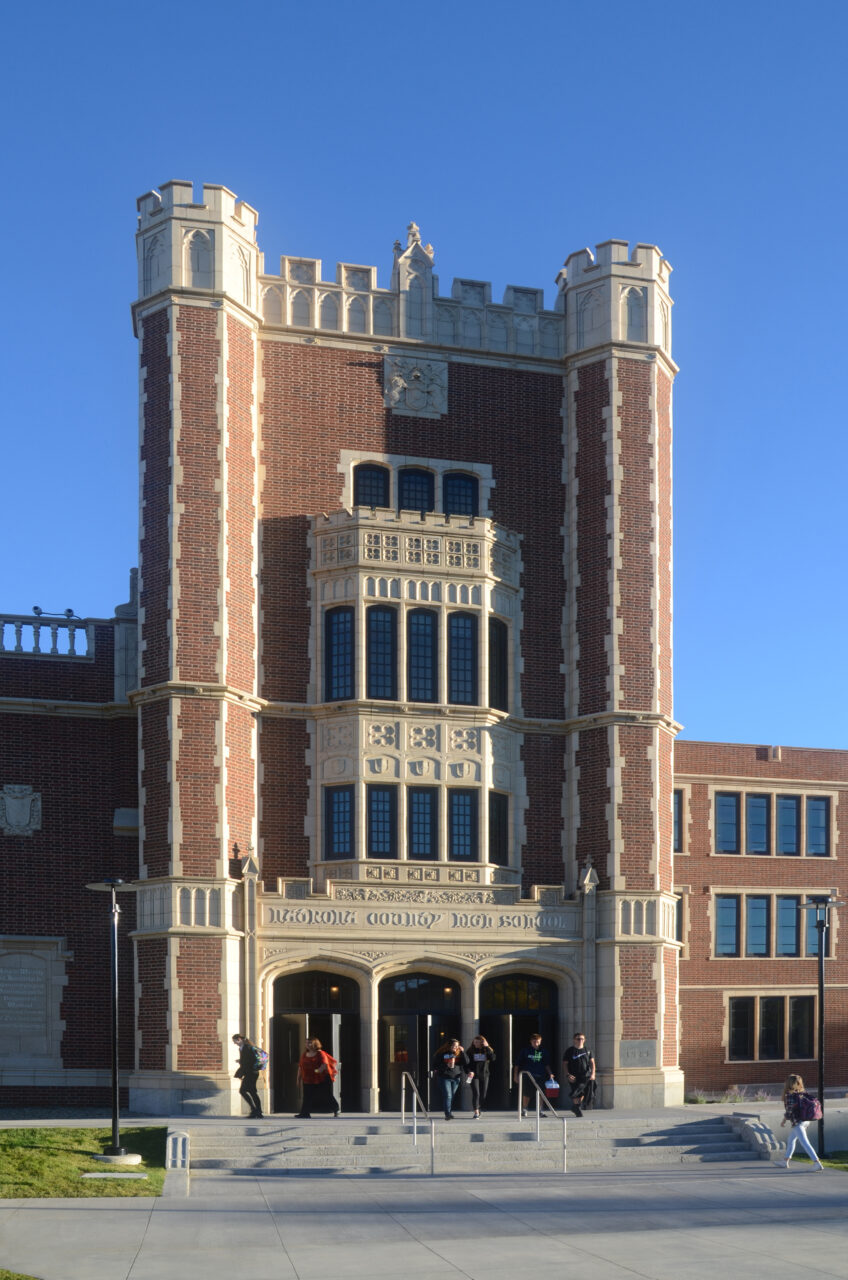Welcome to Five in Focus, HMC Architects’ blog series spotlighting the trends, ideas, and innovations shaping the future of architecture and design. Each edition features insights from our leaders as they share what inspires them and how it informs their work.
Caroline Lemay leads the Seattle staff as Managing Principal and is responsible for several major public schools and preservation projects. Since joining the firm in 2002, she has earned a reputation for navigating highly complex projects and is known for her ability to successfully build collaborative teams. In this Five in Focus, Caroline shares her thoughts on a number of important topics, including the value of historic restoration, sustainability in the built environment, and what architectural teams need to be successful.
1. Preserving the Vital Fabric of History
Landmark sites and historic structures often face significant pressures from the modern world, perceived as too expensive to renovate, not energy-efficient, or simply not meeting the value ratios that real estate developers expect. In an economy where high-density development is a driving force, historic buildings can be perceived as problematic. This is why there can be great pressure to replace the historic buildings of our downtown cores.
I believe it is our responsibility as architects to advocate for and promote the importance of historic structures as an integral part of our communities. They are critical and often irreplaceable in expressing the rich history of a place and its culture.


Our portfolio includes several important historic restoration/rehabilitation projects, including the landmark Benson Polytechnic in Portland, Oregon and our current work at the UW Suzzallo Library . These projects are complex, challenging, and rewarding as they successfully preserved vital historic assets while also modernizing them to meet contemporary user needs, safety and comfort. These projects serve as reminders of the great value of historic sites and the careful stewardship needed to preserve them.
Our data shows that preservation of an existing building is often the most cost-efficient approach. Below is a comparison of the cost-benefits between new and renovated options for three recent projects. This graphic shows that for two out of three projects (Benson and Natrona), the new building option was more expensive than the renovation approach.
Cost Comparison:
Renovation vs. New Construction
Hard Cost Estimates Based on 2019 $/SF

2. Pushing Ourselves to Reduce Impacts on the Environment
In addition to performance, sustainable design can enhance its surroundings and have a positive impact on entire neighborhoods. Over the last two decades, we have made significant progress in designing buildings to be more energy-efficient and reducing the impacts on natural resources and we are thrilled to continue to be a driving force toward a more sustainable future.
Our Pacific Northwest studios are leaders in what is known as “mass timber” design, utilizing the renewable resource of wood as a more sustainable option than structural steel and concrete. We continue to increase our understanding of carbon-neutral design by collecting and analyzing data from completed projects.
Sustainable design is closely tied to conservation of resources since the most sustainable building is often the one that already exists. We aim to help our clients preserve their existing structures by applying our expertise to address complex renovations or by providing envelope restoration services that improve energy-efficiency and extend the life of structures well into the future.
We must continually push ourselves to promote a positive impact on the world through architecture. We can best do this by utilizing a data-driven approach that balances our clients’ needs and budgets with available materials, emerging technologies, and the most efficient construction methodologies.
3. Embracing New Generations of Designers
Today’s workplaces look very different than those of just ten years ago as technology, cultural drivers and expectations continue to rapidly change. We need to adapt to these changes not only to stay competitive, but also to develop more resilient, relevant design solutions, and attract and retain the best emerging talents. For example, as AI-assisted design emerges, the skill sets of digital native designers are becoming invaluable.
As with every new generation, there are profound cultural forces at play that need to be acknowledged and understood. As we are able to do this, we remain a strong and relevant workplace where people are seen as our most valuable resource. As a leader, I recognize the importance of carefully navigating these cultural shifts to foster open communication, flexibility, and purpose, in our workplace. The bottom line is that our workplace has to be meaningful and provide opportunities for engagement and success for every team member.
4. The Power of Mentoring
As new generations step up, senior staff members are crucial to the continuum of expertise and knowledge sharing. So much of our success relies on getting the details right. This is one way we distinguish ourselves from the competition. Nothing beats years of experience in the field to manage risk and drive success for our teams and clients.
I believe having a strong mentoring culture is crucial to the health of our firm. Not only does mentoring bring personal and professional growth to the mentee, but it also fosters a deep sense of accomplishment and connection between the mentor and the mentee.
Whether the relationship is organic or more structured, the promises of mentoring lead to stronger work environments and well-executed projects.

5. Communication—A Meta Skill for Connection and Success
As obvious as it may seem, it is worth saying out loud—our success is deeply influenced by our ability to communicate effectively in every area of our business. This could be communicating our design intent to a client, or taking notes on a field report, or adding drawing details to a construction set. Everything is communication.
In a world where we are more connected than ever, the tools and practices we use to communicate require strategic choices. I always ask myself: Does this require an in-person meeting, a phone call, an email, a text message, or a combination of these? Who needs to take part in the discussion? What is the information flow? Am I using a tone that will be well-received and a format that will be easy to understand?
While written and digital communication is important for our own records, a well-placed phone call can help untangle confusion and create a more personal connection, which in turn builds trust with our clients, contractor-partners, and consultants.
Our work is highly dependent on relationships and connections between people. These can be positively reinforced or fall into a downward spiral of negative interaction, based on the words we use and the tone we project. No matter who you are or where you sit in the org chart, good communication practices can be the difference in your ability to realize success.


